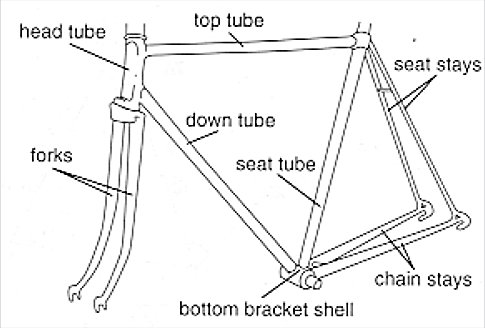Q. I was fascinated to read that my lovely circular wheels were, in fact, made up of lots of triangles. Is the rest of my bike made of triangles, too?
A . I’m glad that you found the reply interesting, and in answer to your question, yes, there are many triangles in the bike construction. In fact the traditional cycle frame is known as a ‘double triangle’ construction.

The first and most obvious triangle is the one formed by the tube that runs from under the saddle across to just below the handlebars - called the “crossbar” then down to the junction (bottom bracket) by the pedal crank “the down tube” and then the one that runs up to the saddle again “the seat tube”.
Behind that triangle is the one that runs from the bottom bracket back to the middle of the back wheel, it’s axle, and from there up to the saddle again.
When you look at it closely you will see that the bottom of this triangle, called the Chain Stay because it keeps the wheel in the right place to keep the chain tight, is, in fact, two thin tubes.
So we could well say that they are joined together by the bottom bracket to form two sides of another triangle and the third side is the axle in the middle of the wheel.
Similarly the twin tubes that go up to the saddle are joined at the top to make two sides of a triangle, again having the axle as their third side, the “seat stays”.
The same sort of triangle is found with the front wheel - axle, front forks.
Wow, are there any other triangles left?
Yes, but these are not made of metal.
There is a virtual triangle from the two points where your wheels touch the ground all the way up to your shoulders, and even your head although of course that isn’t fixed.
You can see another triangle between shoulders, saddle, handlebars and up your arms to your shoulders again.
Of course this last connection is another triangle - handlebars, up both arms to head and shoulders, and thus triangle could be argued to be the most important because it isn’t rigid like the others which give the bike its strength, and it’s where by bending your arms or twisting your shoulders you alter the triangle, and steer your beautiful bike.
I’m not a mathematician, so I am expecting someone to complain that some of my triangles are in fact rhomboids or something, but I hope you can see the beautiful logic of using triangles on a bike.